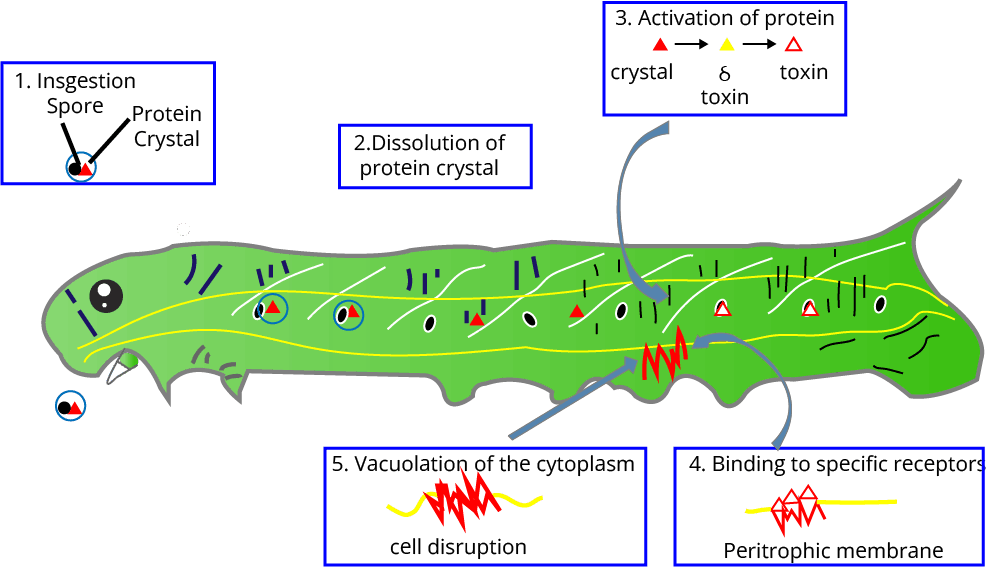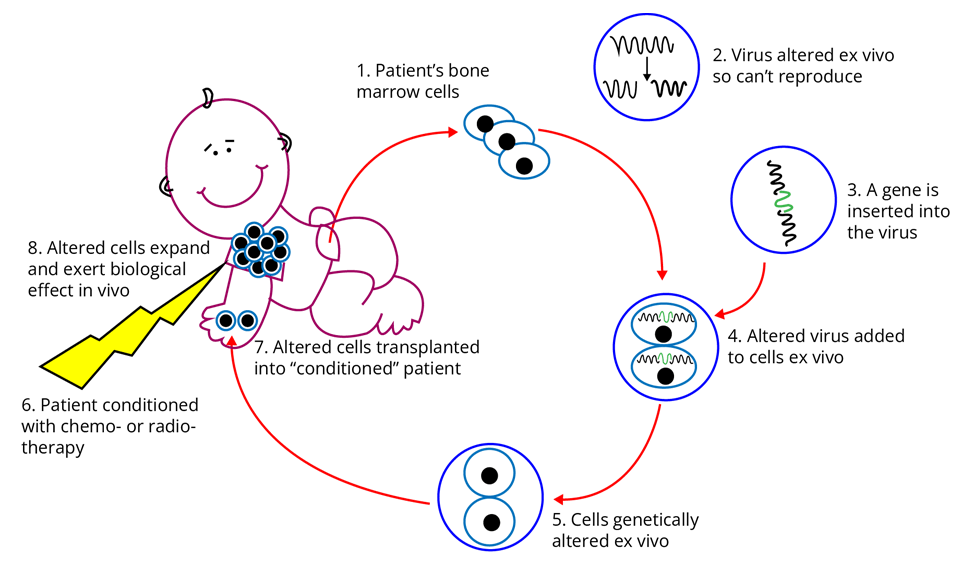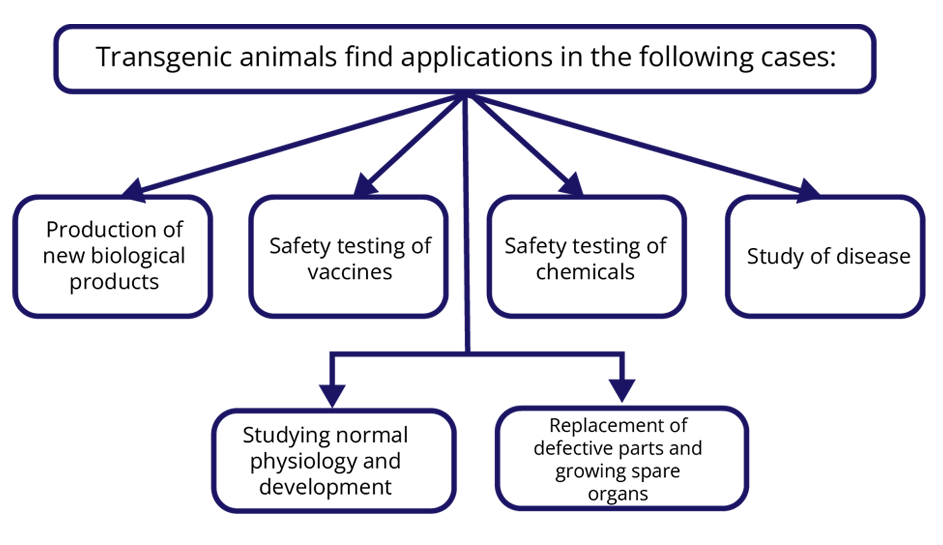




Biotechnology and Its Applications
This document contains the chapter named as Biotechnology and Its Applications as per the requirement of the NEET syllabus for the biology subject. Biotechnology and Its Applications NEET notes include all important topics, concepts, definitions, and important questions concerning the exam.
The term “biotechnology” was given by Hungarian engineer Karl Ereky, in 1919. This particular document carries all of the important concepts related to the chapter. By reading this document one can find out all the answers to the important questions related to the chapter such as what is biotechnology, what are its applications in different fields, what is gene therapy, what are ethical issues, etc.
Important Topics of Biotechnology and Its Applications
Biotechnological applications in Agriculture
Biotechnological applications in Medicine
Transgenic Animals
Ethical Issues
Important Concepts of the Chapter
Biotechnology
It is defined as the branch of Biology which uses both the technology and the application of living organisms and their components to develop, modify, and produce useful products for human welfare.
Biotechnological Applications in Agriculture
The improvement in the agricultural field can be measured in terms of an increase in food production, an increase in overall nutritional value, and the production of disease-resistant varieties.
Some of the ways to increase crop production are as follows:
Agro-chemical based agriculture - The green revolution succeed in increasing the yield by
the application of improved varieties of crops.
the use of agrochemicals such as fertilisers and pesticides.
Organic farming - It is defined as the method of farming that involves growing and nurturing crops without the use of synthetic-based fertilisers and pesticides.
Use of genetically engineered crops - Such types of crops are produced by introducing foreign or desired genes by the use of genetic engineering. The main problem of organic agriculture is that it can not increase the yield to an appreciable extent; hence, GM crops are the solution to this problem.
Transgenic Plants
Such types of plants are produced by introducing foreign or desired genes by the use of genetic engineering.
The following table describes the different kinds of transgenic plants and their applications.
Bt Cotton
Some strains of Bacillus thuringiensis produce protein crystals that can kill certain insects such as lepidopterans (tobacco budworm, armyworm), coleopterans (beetles), and dipterans (flies, mosquitoes). The gene that was responsible for the production of Bt toxin/protein was cryIAc named cry.
For the formation of Bt specific crops, Bt toxin genes were isolated from Bacillus thuringiensis and incorporated into several crop plants.

Role of Biotechnology in Agriculture
Given below is a list of some important roles played by biotechnology in agriculture.
Increase in crop production
Better crop protection
Increase in nutrition value
Disease resistance
Biotechnological Applications in the Medical Field
The recombinant DNA technology has made an immense impact in the area of healthcare in a variety of ways.
Genetically Engineered Insulin/Humulin
Earlier, the insulin that was used for diabetic patients was extracted from the pancreas of slaughtered cattle and pigs that sometimes became the cause of allergy or other types of reactions to the foreign protein.
In 1983, an American company named Eli Lilly prepared two DNA sequences corresponding to A and B, chains of human insulin, and introduced them in plasmids of E. coli to produce insulin chains. Chains A and B were produced separately, extracted, and combined by creating disulfide bonds to form human insulin.
Gene Therapy
It is defined as the collection of methods that allows the correction of defective genes that have been diagnosed in a child/embryo. The first clinical gene therapy was given in 1990 to a 4-year-old girl who was suffering from adenosine deaminase (ADA) deficiency.

Molecular Diagnosis
The effective treatment of any disease requires early diagnosis, which can be possible by using a variety of techniques, such as:
1. Recombinant DNA technology
2. Polymerase Chain Reaction
3. Enzyme Linked Immuno-sorbent Assay (ELISA)
Transgenic Animals
The living organisms that carry the foreign gene are called transgenic animals.

The maximum number (95%) of existing transgenic animals is mice. However, some other animals are also used. Examples of other transgenic animals are given in the below table.
Different Kinds of Transgenic Animals
Ethical Issues
The Indian Government has set up an organisation named the Genetic Engineering Approval Committee (GEAC) that takes decisions regarding the validity of GM research and the safety of introducing genetically modified organisms (GMOs) for public services.
Biopatent - It is defined as a patent granted by the government to the inventor for biological entities and for products obtained from them. Example includes basmati rice and neem-based products are the biopatents of India.
Biopiracy - It is defined as an act of unlawful commercial exploitation of biological materials (such as extracts from the medicinal plants) that are native to a particular country without providing fair or the financial compensation to the government of that country.
Bioethics - It is defined as the branch of applied ethics that focuses on the philosophical, social, and legal issues arising in medicine and the life sciences.
Solved Examples from the Chapter
1. Write a short note on golden rice.
Ans: Golden rice is a transgenic variety of rice (Oryza sativa) that contains a good quantity of beta carotene (in-active state of vitamin A). It was genetically engineered by Prof. Ingo Potrykus and Peter Bayer. The colour of the grains is yellow because of the presence of beta carotene, which is converted into vitamin A. Thus, golden rice is a good source of vitamin A, which is required by every individual.
Key point to remember - Gold rice is a transgenic variety of rice which is a good source of vitamin A.
2. Briefly discuss genetically engineered insulin.
Ans: Earlier, the insulin that was used for diabetic patients was extracted from the pancreas of slaughtered cattle and pigs that sometimes became the cause of allergy or other types of reactions to the foreign protein.
Insulin is the major hormone that plays an important role in regulating the glucose level in the blood.
It is mainly released by the beta cell of the pancreas and acts on the hepatocytes (liver cells) and adipocytes (cells of adipose tissue) and enhances the uptake and utilisation of cellular glucose.
In 1983, an American company named Eli Lilly prepared two DNA sequences corresponding to A and B, chains of human insulin, and introduced them in plasmids of E. coli to produce insulin chains. Chains A and B were produced separately, extracted, and combined by creating disulfide bonds to form human insulin.
Key point to remember - In 1983, an American company named Eli Lilly prepared genetically engineered insulin.
3. GEAC stands for?
Ans: GEAC stands for Genetic Engineering Approval Committee. It took decisions regarding:
The validity of GM research.
The safety of introducing genetically modified organisms (GMOs) for public services.
Key point to remember - GEAC= Genetic Engineering Approval Committee
Solved Problems of Previous Year Questions from the Chapter
1. The genetic defect-adenosine deaminase (ADA) deficiency may be cured permanently by
A. Periodic infusion of genetically engineered lymphocytes having functional ADA cDNA.
B. Administering adenosine deaminase activators.
C. Introducing bone marrow cells producing ADA into cells at early embryonic stages
D. Enzyme replacement therapy.
Ans: The correct answer is “C”.
This is because Adenosine deaminase deficiency disorder or SCID is caused by mutations in the ADA (adenosine deaminase) gene which encodes the enzyme adenosine deaminase.
A patient having this genetic disorder has non-functional T-lymphocytes and hence cannot provide the immune response against the invading pathogens.
SCID is cured by providing a functional ADA gene or enzyme to the patients by the following approach.
Periodic infusion of genetically engineered lymphocytes having a functional ADA
cDNA but the therapy is not permanent.
Administering adenosine deaminase activators make the enzyme functional, but
again a temporary approach.
The introduction of bone marrow cells with functional ADA genes by gene therapy at the early embryonic stages permanently cures the patients from the disease.
Enzyme replacement therapy is also used which involves the repeated injection of the ADA enzyme, again this is not a permanent approach to cure the disorder.
Tricks to solve easily - One can apply an elimination method to solve the problem.
2. The maximum number of existing transgenic animals is of _____
A. Fish
B. Mice
C. Cow
D. Pig
Ans: The correct answer is “B”.
The living organisms that carry the foreign gene are called transgenic animals. Examples of transgenic animals are rats, rabbits, pigs, sheep, cows, and fish. The mice contribute to approximately 95% of all existing transgenic animals.
3. In Bt cotton, the Bt toxin present in plant tissue as pro-toxin is converted into active toxin due to _____.
A. Acidic pH of the insect gut
B. Alkaline pH of the insect gut
C. Presence of conversion factors in insect gut
D. Action of gut microorganisms
Ans: The correct answer is “B”.
Bt toxin present in the inactive form. Once an insect ingests the inactive toxin, it gets converted into an active form of toxin due to the alkaline pH of the gut which solubilised the crystals.
Tricks to solve easily - AA, first A means activation and second A means alkaline.
Practice Questions
1. For increasing the food production, which biotechnological application is applied?
A. Agro-chemical based agriculture
B. Organic agriculture
C. Genetically engineered crop based agriculture
D. All the above
Ans: The correct answer is “D”.
2. How are ‘cry’ and ‘CRY’ different from each other?
Ans: ‘cry’ is the gene that encodes for Bt toxin while ‘CRY’ is the protein that is encoded by the ‘cry’ genes.
3. Give a few characteristics of GMOs.
Ans: GMOs stand for genetically modified organisms. These types of organisms contain the gene of interest. It is produced by the application of genetic engineering.
Some of the important characteristics of these organisms are given below:
They are capable of producing varieties of proteins that are pharmaceutically useful.
They are capable of producing enhanced, modified, or new metabolites.
They can be used for the protection of crops by control of insects, fungal diseases, frost damage, etc.
They degrade non-biological wastes and detoxify toxic wastes.
Conclusion
This article contains all the important information as per the requirement of students who are preparing for the NEET exam and can be really helpful for a quick and effective revision. It includes all the important concepts and topics, questions from the previous year NEET exam, NEET mock test as well as the Biology NCERT books. Do try out the practice question on your own to test your knowledge and level of preparedness and obtain the desired outputs.
NEET Important Chapter - Biotechnology and Its Applications

 Share
ShareFAQs on NEET Important Chapter - Biotechnology and Its Applications
1. Is the chapter Biotechnology and Its Applications important for NEET?
Yes, it is important for the NEET exam because it covers most of the important topics and the applications of biotechnology in our day-to-day life. Hence, it is useful for the exam.
2. Is NCERT enough for preparing for the NEET exam?
Yes, it is enough because it covers all the concepts that are important for the exam, and NCERT books are the most recommended for the NEET exam.
3. What are the important topics of the chapter Biotechnology and Its Applications?
Although all topics and chapters are equally important in terms of the NEET exam, here are some of the important topics from where the questions are generally asked from Biotechnology and Its Applications: transgenic plants such as Bt cotton, golden rice, Flavr Savr Tomato, Human insulin, Gene therapy, Genetically modified organisms, Ethical issues, etc.








 Watch Video
Watch Video
